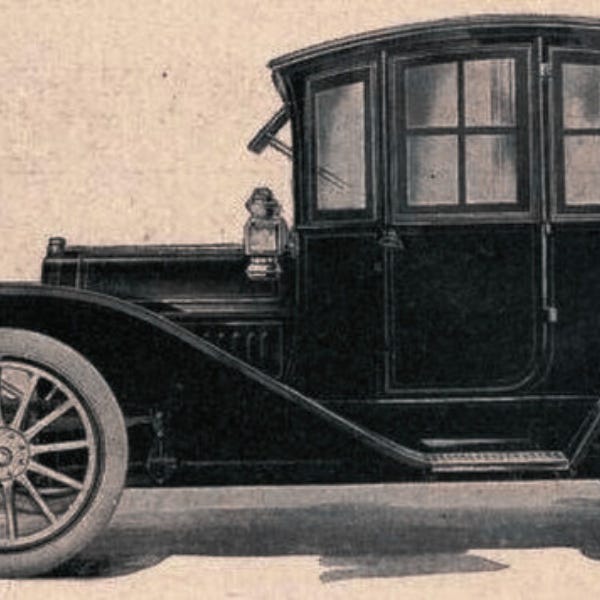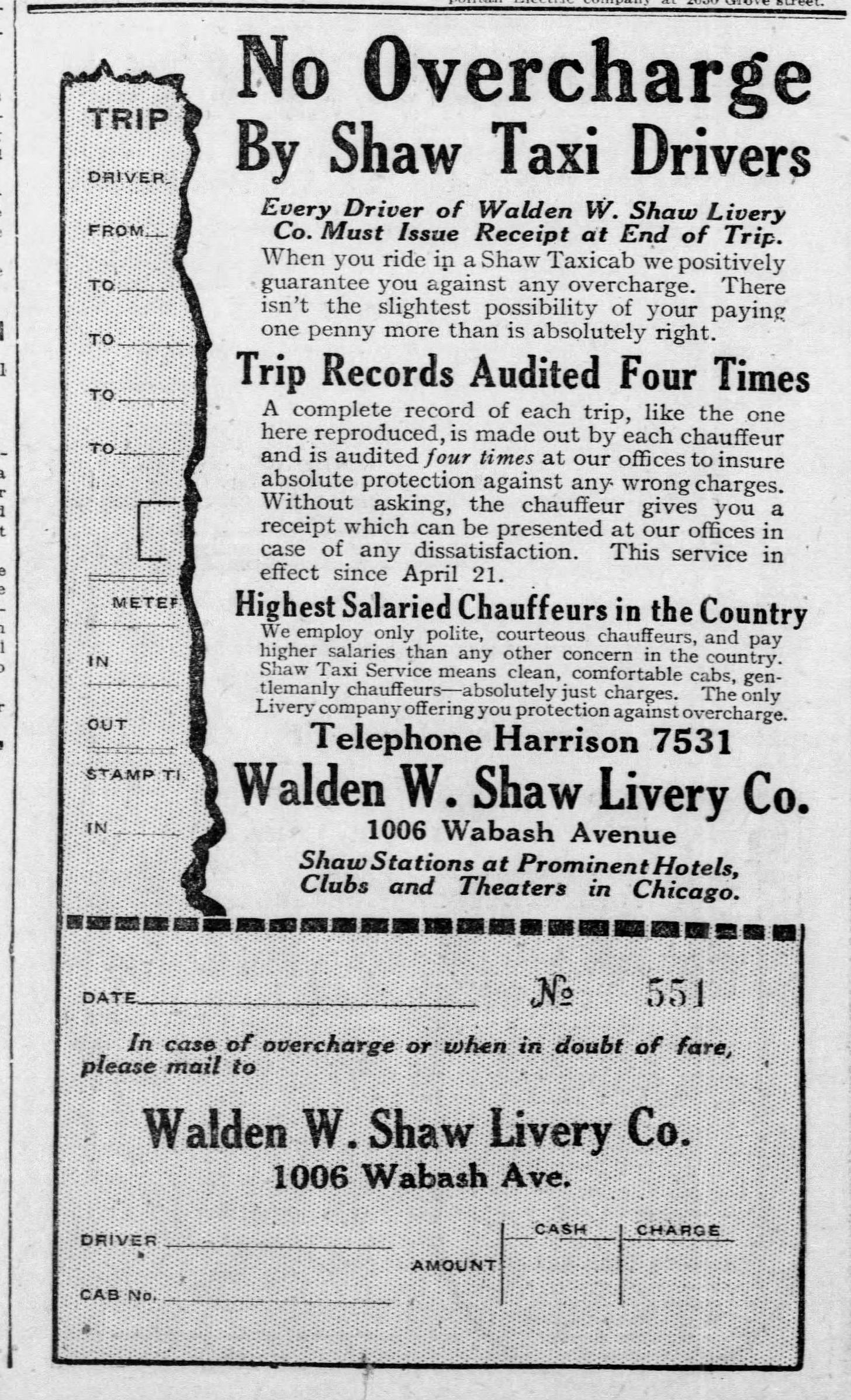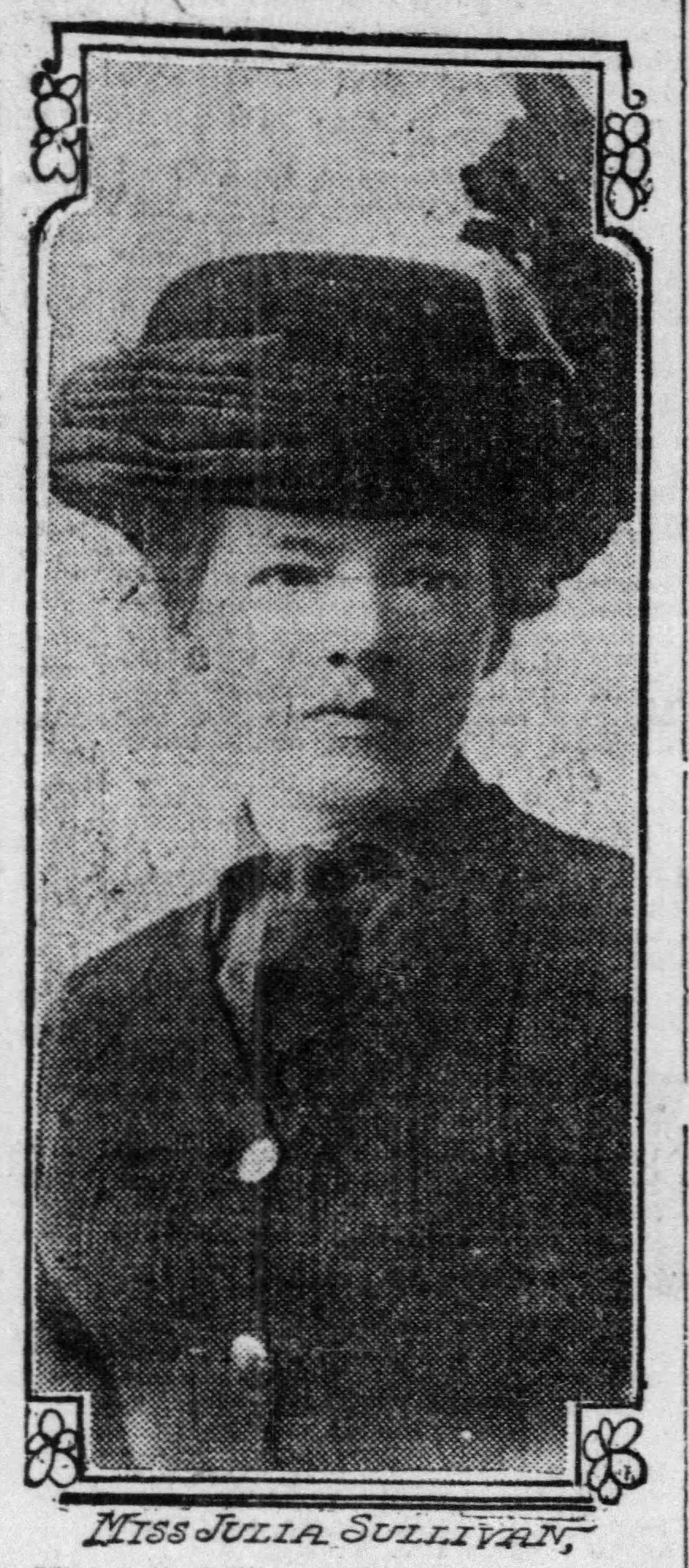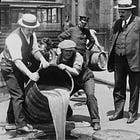Chicago's 1st Chauffeuse hits the Road
How a champion archer earned her license and changed the face of public transportation
Having resided outside the US for a good portion of time, I’ve gotten used to not driving, relying instead on private drivers and taxis. Sometimes it’s just easier and best to let someone else do the driving in an unfamiliar place that has different rules of the road, both formal and informal.
When we lived in Dubai, that meant I would often find myself in the back of a pink taxi. Beginning in 2007, local cab companies had started offering special taxis for women and driven by women, and to distinguish them from all the other, male-driven cabs out there, these women-only cars were painted pink.
When I came upon this story about Julia Sullivan, Chicago’s first female taxi driver aka chauffeuse I couldn’t help but think of those pink taxis, and the history-making women who drive them.
Please hit the ❤️ button at the bottom of the page to help this story reach more readers. And if you’re not already a subscriber, I’d love to have you join me. Thanks!
Release Date: March 25, 2025
A remarkable woman
By all accounts, Julia Sullivan was a pretty remarkable woman. Born in 1870 somewhere in Massachusetts to John and Ellen (Keefe) Sullivan, Julia was a frail child, predisposed to tuberculosis, who went on to become a world-class athlete by the time she was 20.
Julia was said to be a champion skater in Canada (I haven’t been able to find those records), and was named the U.S. National Women Archery champion in 1911. She was also a member of the Chicago Gun Club and “played handball and basketball with masculine vigor”. 1
In 1912, seemingly bored by athletics and seeking a new challenge, Julia decided to become a professional driver. Not just any professional driver, but Chicago’s first female chauffeur. Or as newspapers of the day noted, a “chauffeuse”.
I would cut a fine figure
Julia may have been inspired by a Paris woman by the name of Gaby Pohlen. In May of 1908, Gaby had become the first female chauffeuse in Paris, and it was big news.
“Not content with being cab drivers, two women have made further inroads on man’s domain, and have qualified as drivers of taximotors. Their example will no doubt be followed soon by others.” 2
Like Julia, Gaby was vivacious, independent and athletic, having had what she called a “sporting turn of mind” since she was a child. In addition to a passion for the shooting sports and horsemanship, Gaby was also a competitive walker and avid deep-sea fisherman.
And she was ambitious.
“Seven years ago I learned to drive a small Darracq machine,” she told a reporter, “and I have driven a good deal since. My ambition is to steer a fast racing automobile. I would cut a fine figure, I assure you.” 3
A fine, healthy outdoor life
In the spring of 1912, 42-year-old Julia Sullivan began working in the mechanical shop of the Walden Shaw Livery Company, the precursor of what we know today as The Yellow Cab Company. She spent her days learning everything there was to know about the workings of an automobile engine, troubleshooting mechanical issues and memorizing street maps.
Her boss, John Hertz, saw several advantages to employing women like Julia, believing having them behind the wheel would eliminate many of the objections passengers had to man-driven cars – things like rude and impertinent drivers, reckless and fast driving and intentional overcharging of fares.
Overcharging, especially, was such a problem that the company took out quarter page ads in newspapers across Chicago “positively guaranteeing’ passengers against any overcharge. Chauffeurs were required to complete a detailed record of each trip, the advert explained, and that record was audited four times. To bring home their promise, Walden Shaw also published a form passengers could fill out and return to report an overcharge and get reimbursed. 4
Although John was forward-thinking when it came to female drivers – New York City didn’t have a female chauffeur until 1915 – he was also practical.
“We are not going to employ women entirely,” he explained. “All of the night driving will still be done by men. But our idea is to station women at the big department stores and hotels where the majority of our customers are women.” 5
For her part, Julia saw becoming a chauffeuse as both a new challenge and a lucrative career opportunity.
“This line of work is something new for women in this country,” she told a reporter. “But it will become common within a few years. Twenty per cent of the taxicab drivers in Paris are women. It is a fine, healthy outdoor life. The pay is also much better than women can earn in other lines. 6
In fact, in those same ads, Walden Shaw boasted that they had the highest-salaried chauffeurs in America.
A dashing costume
When Gaby Pohlin became the first female taxi driver in Paris, there was much attention to what she would wear – so much so that her “costume” was mentioned in multiple headlines.
“Women Drive Taximotors: One Chauffeur Wears a Dashing Costume and Does Big Business”, proclaimed Washington DC’s Evening Star. 7
The “costume” Gaby wore consisted of “a beige tailor-made dress, with a long grey ‘cache poussiere’ coat,” and a “hat of soft felt with a wide brim such as a Western ranchman or cowboy might envy.” 8
Four years later when Julia became Chicago’s first female taxi driver, what she was wearing was also the talk of the town. A local paper even included a photo.
In early April, Julia went before the Board of Public Motor Vehicle Registry to sit for her written chauffeur exam. And two weeks later, she took the practical driving test, “negotiating all the turns to the satisfaction of Harry L. Hudson, the examiner, and was posted as eligible with a mark of 82.” 9
The next day, the Chicago Times heralded the first official trip by the Windy City’s first and only female chauffeuse, noting Julia had picked up a rider from a downtown hotel and deposited him at the LaSalle Street station.
“For this she collected 50 cents, which was paid in a businesslike manner without any attempt at flirtation.” 10
By whom, the article didn’t note.
It’s not known how long Julia worked as a chauffeuse for John Hertz and the Walden Shaw Livery Company, or if John achieved his goal of hiring thirty female drivers by the end of 1912. There are some indications that by the start of summer, Julia had moved on to a new adventure.
A few month later, on November 26, 1912, she committed suicide, apparently after a falling out with her long time companion and fellow athlete, Bessie Spaulding. Julia was just 42. 11
As for John, he and his partner, Walden Shaw, continued to build their taxi company, and in 1915 had the brilliant idea to paint their entire fleet bright yellow to make them more visible to potential passengers. Five years later, John took sole possession of the company, renamed it Yellow Cab Company, and, as they say, the rest is history.
Copyright 2025 Lori Olson White
Have you read the incredible true story of Aimee Henry and Mary Martha Parker? Call Me a Bastard is my longest serialized story to-date, and the one that started it all here on the Lost & Found Story Box. Check out the story from the beginning.
And in case you missed it, here’s a link to my most popular short series to-date, The Incorrigible John George. I hope you’ll agree that “incorrigible” is the best way to describe this old scoundrel!
The Lost & Found Story Box is reader-supported. When you buy through links on our site, we may earn an affiliate commission.
End Notes
1 New Diana, Left by Chum, Suicide: Strange Story of Love of Athletic woman for Another Revealed by Death. Shared Home for 15 Years: Quarrel Ends Long Companionship which Rigorously Excluded Men,” Chicago Tribune, Chicago, IL, November 27, 1912, P. 2.
2 Paris women Seek to be Car Drivers. Two Women Have Qualified as Drivers of Taximotors and their Example will be Followed by Others”, The Atlanta Journal, Atlanta, GA, May 31, 1908, P. 21
3 Paris women Seek to be Car Drivers. Two Women Have Qualified as Drivers of Taximotors and their Example will be Followed by Others”, The Atlanta Journal, Atlanta, GA, May 31, 1908, P. 21
4 Women to Drive taxis in Chicago. Motor Livery Concern will have Score of ‘Chauffeuse’; Follows Paris. Holds they Excel Men”, Chicago Tribune, Chicago, IL, March 27, 1912, P. 1.
5 Walden Shaw Livery Company Advertisement,
6 “Women Drive Taximotors: One Chauffeur Wears a Dashing Costume and Does Big Busines”, The Evening, Star, London, England, May 31, 1908, P. 11.
7 “Paris Day by Day. Lady Taxi-Driver”, The Daily Telegraph, London, England, May 9, 1908, P. 12.
8 “Here is Official Chauffeuse Costume”, Chicago Tribune, April 9, 1912.
9 “Woman Passes Loop Auto Test. Julia V. Sullivan Takes Examiner a Ride and Later is Posted as Eligible,” Chicago Tribune, Chicago, IL, April 19, 1012, P. 9.
10 “Here is Official Chauffeuse Costume, Chicago Tribune, Chicago, IL, April 9 ,1912.
11 “Archer Champion Ends Her Own Life. Miss Julia Sullivan Shoots Herself Following Disagreement with friend of Twelve Years’ Standing. Despondency Causes Action. Bullet Sent through Heart as Woman Athlete Surveys Many Trophies Won Through Her Skill,” The Inter Ocean, Chicago, IL, November 27, 1912, P. 5.












What a fascinating and well-written story! I never thought that women cab drivers were a thing, but it makes complete sense. In Japan there are cars on the subway marked “women only,” presumably to make women feel more comfortable in crowded conditions. I was also shocked at Julia Sullivan’s suicide. It made me want to know more of her personal life and struggles. Thanks for a great read, Lori!
What a sad ending to such a unique and courageous person!
I was enchanted with her story- I immediately thought of Betty Garret in one of my favorite movies "On the Town."
I have an observant Muslim friend who often has to explain to people why she can't just "get a lift" from a man not a member of her family. Having heard more than a few stories about Ubercreeps, I love the idea of a woman-only taxi service for women!